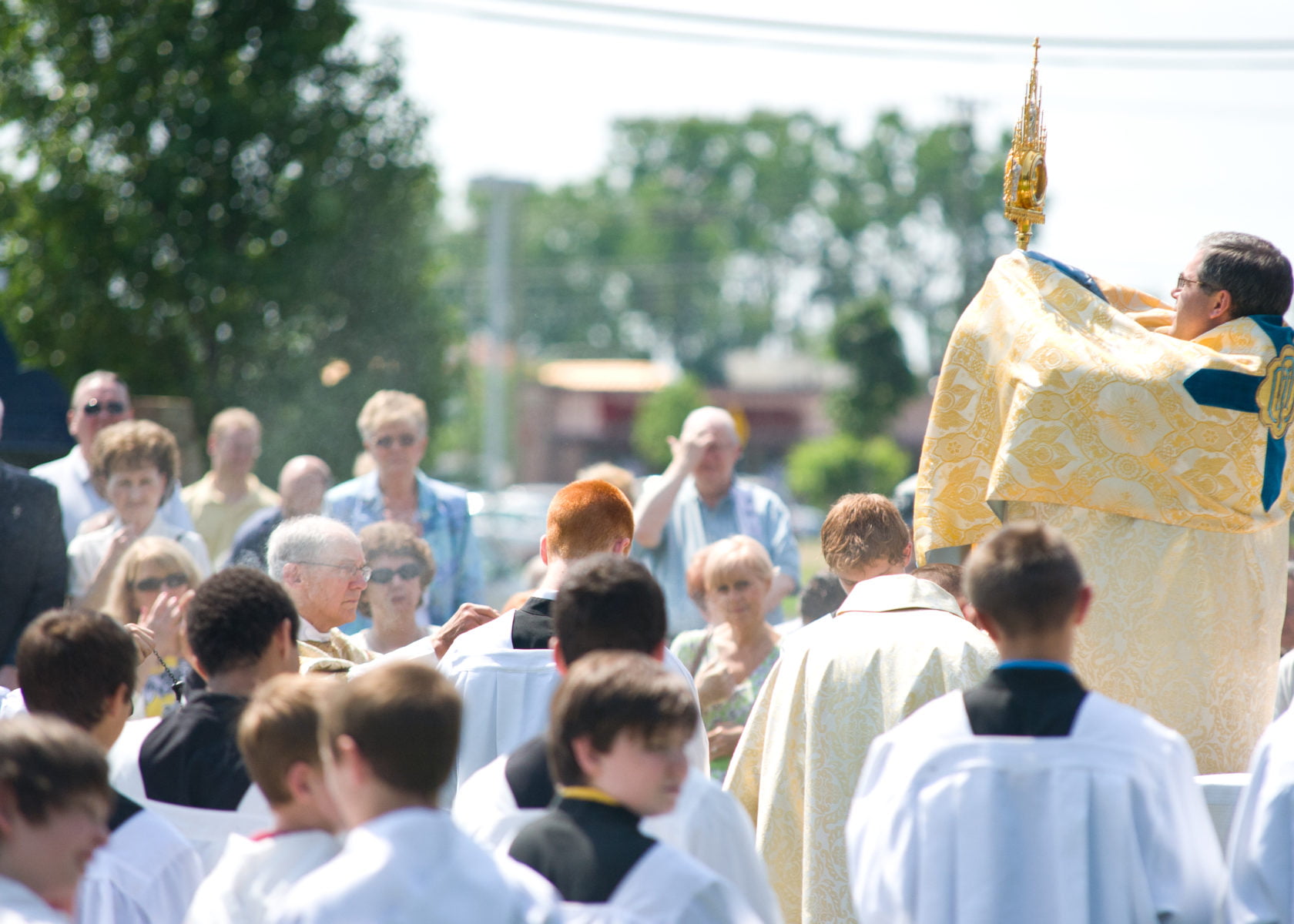SOLEMNITY
Meaning
The feast of Corpus Christi is a doctrinal feast (it does not celebrate an event of salvation, but rather reminds of a particular doctrine – teaching of the Church). Its origins go back to the time of transformations of faith and devotional life in the Middle Ages.
After Christianity obtained freedom (4th century), its liturgy eventually adopted new traits. The active participation of people in the liturgy kept declining; the focus shifted from the celebration as a shared action of the people of God to the sacraments to be accomplished correctly. The Eucharistic communion lived through the Eucharistic meal was substituted by watching and venerating the consecrated Body and Blood. The custom to elevate the Host (but not the chalice) immediately after the consecration and show it to people starts around the year 1200 and consecrated Hosts would be occasionally exposed outside of mass as well.
Theologically this feast connects with the doctrine on transubstantiation of bread and wine in the Eucharist, defined as a dogma at the IV Lateran Council in 1215.
History
The visions of a sister Juliane from Luttich in 1209 gave the major impetus to this movement. Bishop Robert from Luttich introduced this feast in his diocese in 1247 and pope Urban IV (who used to serve as a subdeacon in Luttich) prescribed it for the universal Church in 1264.
The procession with consecrated Host was originally not part of the feast; it was only introduced during the 14th century and it increased the popularity of this feast. Four stations with readings from four gospels and blessings in four directions were added in the course of the 15th. It was especially the Baroque period that saw a growth of decorations, choreography, banners, flags, pictures, relics, and similar.
Liturgical Celebration
Liturgical texts talk about the mystery of the Eucharist in a variety of ways. Eucharist is:
- foreshadowing of the divine life to be obtained;
- sign of unity and peace;
- memorial of passion and resurrection;
Biblical readings offer a variety of options:
- Reports about the last supper in Mark and Paul (1 Cor)
- Bread of Life discourse (John)
- Multiplication of bread and feeding of the crowds (Luke)
- Feeding of Israel by manna in the desert (Deuteronomy)
- Covenant on Mount Sinai (Exodus)
- Abraham and Melchizedek (Genesis)
The eucharistic procession can follow after mass. The beginnings of the four gospels or other passages are read at four altars, followed by intercessions and Eucharistic blessing. Certain countries (including Rome) only know one altar.
The procession is to show continuity with Holy Mass, rather than being an isolated veneration of the Blessed Sacrament.
Feast of the Precious Blood
A feast of the Precious Blood used to be celebrated from 1849 until 1970. The two feast days were combined then and given the new name The Most Holy Body and Blood of Christ.
*The 9:30AM & 11:30AM Holy Masses will be combined on Sunday, June 2. There will be an outdoor Corpus Christi Procession at the end of the 10:00AM Holy Mass. Please bring flower petals in a basket if your child would like to sprinkle flower petals before the Blessed Sacrament during the Procession.


